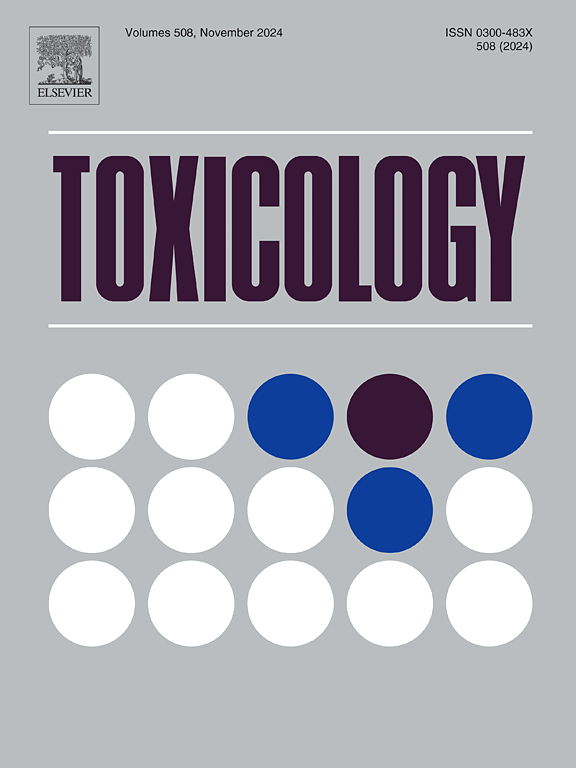Bioinformatics identification of shared signaling pathways and core targets linking Benzo[a]pyrene exposure to HCC progression
IF 4.8
3区 医学
Q1 PHARMACOLOGY & PHARMACY
引用次数: 0
Abstract
With the increasing prevalence of environmental pollutants, there is growing concern about the potential effects of these substances in major diseases such as liver cancer. Previous studies have suggested that various chemicals, such as benzo[a]pyrene(BaP), produced by burning carbon containing fuels, may negatively affect liver health, but the exact mechanisms remain unclear. This study aimed to explore the potential molecular mechanisms of BaP in the progression of liver cancer. Through an exhaustive study of databases such as ChEMBL, SwissTargetPrediction, STITCH and TCGA, we identified 169 potential targets that are closely related to BaP and liver cancer. Next, we conducted Gene Ontology (GO) and Kyoto Encyclopedia of Genes and Genomes (KEGG) enrichment analyses using the clusterProfiler package to study the biological functions and important pathways of potential targets induced by BaP, which showed that these targets were associated with mitochondrial function, cellular energy metabolism and REDOX reactions. The protein interaction (PPI) network was constructed using the STRING database and Cytoscape software to identify the core targets UBA52, NDUFS8, CYP1A2, NDUFS1 and CYP3A4. The interaction between BaP and these core proteins was further analyzed via molecular docking using the CB-Dock2 database, demonstrating high binding stability, which suggests their critical role in BaP-induced hepatocellular carcinoma (HCC) toxicity. Subsequently, we found significant differences in the expression of five core genes (UBA52, NDUFS8, CYP1A2, NDUFS1, CYP3A4) in HCC, and significant correlation between UBA52, NDUFS8 and CYP3A4 and survival of HCC patients. Single-cell sequencing analysis showed that the expression of UBA52 gene was particularly pronounced in the three immune cells.
苯并[a]芘暴露与HCC进展相关的共享信号通路和核心靶点的生物信息学鉴定
随着环境污染物的日益普遍,人们越来越关注这些物质在肝癌等重大疾病中的潜在影响。以前的研究表明,燃烧含碳燃料产生的苯并[a]芘(BaP)等各种化学物质可能对肝脏健康产生负面影响,但确切的机制尚不清楚。本研究旨在探讨BaP在肝癌进展中的潜在分子机制。通过对ChEMBL、SwissTargetPrediction、STITCH和TCGA等数据库的详尽研究,我们确定了169个与BaP和肝癌密切相关的潜在靶点。接下来,我们利用clusterProfiler软件包进行了基因本体(GO)和京都基因基因组百科全书(KEGG)富集分析,研究了BaP诱导的潜在靶点的生物学功能和重要途径,发现这些靶点与线粒体功能、细胞能量代谢和氧化还原反应有关。利用STRING数据库和Cytoscape软件构建蛋白相互作用(PPI)网络,鉴定核心靶点UBA52、NDUFS8、CYP1A2、NDUFS1和CYP3A4。通过CB-Dock2数据库进一步分析了BaP与这些核心蛋白之间的相互作用,显示出高度的结合稳定性,这表明它们在BaP诱导的肝细胞癌(HCC)毒性中起着关键作用。随后,我们发现5个核心基因(UBA52、NDUFS8、CYP1A2、NDUFS1、CYP3A4)在HCC中的表达存在显著差异,UBA52、NDUFS8、CYP3A4与HCC患者的生存率存在显著相关性。单细胞测序分析显示,UBA52基因在三种免疫细胞中的表达特别明显。
本文章由计算机程序翻译,如有差异,请以英文原文为准。
求助全文
约1分钟内获得全文
求助全文
来源期刊

Toxicology
医学-毒理学
CiteScore
7.80
自引率
4.40%
发文量
222
审稿时长
23 days
期刊介绍:
Toxicology is an international, peer-reviewed journal that publishes only the highest quality original scientific research and critical reviews describing hypothesis-based investigations into mechanisms of toxicity associated with exposures to xenobiotic chemicals, particularly as it relates to human health. In this respect "mechanisms" is defined on both the macro (e.g. physiological, biological, kinetic, species, sex, etc.) and molecular (genomic, transcriptomic, metabolic, etc.) scale. Emphasis is placed on findings that identify novel hazards and that can be extrapolated to exposures and mechanisms that are relevant to estimating human risk. Toxicology also publishes brief communications, personal commentaries and opinion articles, as well as concise expert reviews on contemporary topics. All research and review articles published in Toxicology are subject to rigorous peer review. Authors are asked to contact the Editor-in-Chief prior to submitting review articles or commentaries for consideration for publication in Toxicology.
 求助内容:
求助内容: 应助结果提醒方式:
应助结果提醒方式:


